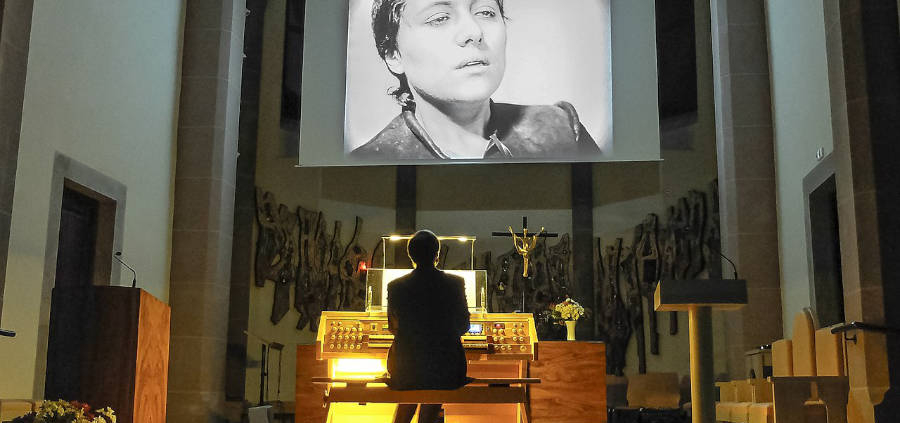Reaching the Unreachable by Gene Ciarlo
Religion and spirituality are related, and yet they are worlds apart in their existential reality. It is indisputable, proclaims a highly acclaimed, bestselling book; along with the author’s other three major works, this book points out in its opening chapters the distinction between faithfully owning and practicing a religion and developing a spiritual mindset and lifestyle. Here is a sampling of the author’s understanding of spirituality:
Spiritual journeys . . . usually take people in mysterious ways towards unknown destinations. The quest usually begins with some big question, such as who am I? What is the meaning of life? What is good? Whereas most people just accept the ready made answers provided by the powers that be, spiritual seekers are not so easily satisfied. They are determined to follow the big question wherever it leads, and not just to places they know well or wish to visit. . . . That’s what a human is—a good spiritual soul trapped inside an evil material body.
Note well that our author creates a dualism between the material world and the world of the spirit, unlike writers such as Teilhard de Chardin, who sees a unity in all things, material and spiritual. Our author perceives matter as a shackle that holds a person back from rising above the mundane. The seekers who search for more than the commonplace and routine must, he writes, “undertake a journey back to the spiritual world, which is totally unfamiliar to us, but is our true home. During this quest we must reject all material temptations and deals.” Is the author speaking about his own journey, or is he just projecting his idea of what a spiritual life ought to be? His intention becomes clearer in subsequent statements:
Often enough, one of the most important obligations for spiritual wanderers is to challenge the beliefs and conventions of dominant religions. . . . For religions, spirituality is a dangerous threat. Religions typically strive to rein in the spiritual quests of their followers and many religious systems have been challenged not by laypeople preoccupied with food, sex and power, but rather by spiritual truth-seekers who expected more than platitudes.
Now we are getting into the heart of the matter. Our author is saying that religion, in fact, can be and often is the enemy of spirituality. I wonder how many people who are faithful churchgoers, prizing their religious beliefs and practices, can accept that premise? It takes some thoughtful reflection to get to the heart of this apparent contradiction.
It is time that we identify the man, his work, and his theology before proceeding to an analysis of his troubling statements. He is Yuval Noah Harari, author of Homo Deus, the book from which I quote. He is an avowed atheist, a man who denies the existence of God, and who repeatedly, in all of his books, has stated unabashedly that he does not believe in a God who creates, redeems, and sanctifies. He takes pride in his atheism because it is part and parcel of his message in all of his writing. Just translate the title of this book, Homo Deus, and you have part of the answer: he believes that gradually but invariably we are becoming our own God!
I agree with much of what Harari has to say about spirituality and trying to live in a spiritual or “unworldly” way. And I agree with him in the (albeit limited) way in which he describes life in the spirit. But when he talks about religion and whether or not it assists or hinders one’s journey toward a personal, un-earthbound reality, it leads me to a very tender spot in my own thinking. With Harari I want to say that these are often, perhaps most often, two different worlds, yet frequently juxtaposed and contrasted as if one is bound inextricably to the other.
Can true personal, spiritual depth and religion go together? Yes, because that is what religion, any religion, is supposed to facilitate: a spiritual life, the kind that Harari describes in the quote above. Do they mesh and become one in the hearts and minds of those who profess to have both God, and therefore worship, at the center of their lives? Perhaps it is a mark of arrogance and false presumption on my part to say that, at least in the past and from my own experience, we have had billions of religious people but comparatively few spiritual men and women. I unabashedly say that religion has often been the enemy of spirituality, and history has proven it.
How odd it seems that so many men and women who have been recognized as saints in the annals of church history have thwarted and contradicted the teachings and actions of the church, of religion. Early on, Tertullian, a prolific writer and a defender of orthodoxy in the second century, was excommunicated for his belief in the heresy of Montanism. Joan of Arc was excommunicated by a politically motivated court before her execution, but the church later changed its mind and canonized her as a saint. Many spiritual men and women down through the centuries have disagreed with the way the church has carried out its mission as introduced and lived in the person of Jesus, the God-man, acknowledged as the Christ. Reading and reflecting on it, I feel quite certain that he was not happy with the way the religion of Judaism was developing in his time.
Those persons whom the church identified as heretics are ancient history. What about today, the great theologians of our time who have been censured and forbidden to teach or write because their theology was not in keeping with the de fide dogma of the Catholic Church? Hans Küng, for one, acknowledged as one of the greatest modern theologians, was forbidden to teach because he questioned many dogmas of the church—the infallibility of the pope, for instance. Closer to home, Charles Curran, priest and professor, was forbidden by Rome to teach at the Catholic University of America because of his views on sexual ethics.
However, thinking more deeply, I can understand the church’s position and why it must stand firm in how it defines itself and what it is about. It is a sociological reality or principle that if any institution, including the church, is to retain its identity and continue through into the future, it must be very firm in its beliefs and practices. After all, even religion is firmly ensconced in terra firma, and is therefore subject to our weaknesses, strengths, foibles, and peculiarities.
Religions necessarily straddle heaven and earth, matter and spirit. They are a terrestrial reality. They deal with matters of the spirit that are not of this earth or universe, and yet their daily commerce is with flesh and blood. Therefore, as part of this reality, the Catholic Church—and all religions for that matter—must have what they may call its foundational beliefs or dogmas (from the Greek meaning “tenet”) to keep it secure if it is to perdure into the future.
In Catholic teaching, a dogma is a truth revealed by God that the church’s magisterium has officially defined as binding for all Christians to believe irrevocably. It can happen through an ecumenical council, a universal council of bishops, or through an ex cathedra statement by the pope, acting under the “gift” of infallibility. It must be further understood that a dogma must be connected to divine revelation, which means that it is rooted in Scripture and tradition. It all sounds very academic, but sociologically speaking, this is how the church as an earthly institution protects itself from being overwhelmed by every whim and fancy that comes down the pike saying, “This is from heaven.”
I must stress that the above description of dogma and the reality of the church as an earthly as well as a spiritual phenomenon describes how any religion protects itself and carries on through the ages into eternity. The followers of a religion are expected to accept certain beliefs and practices, but that is not to say that they therefore become men and women who are moved and motivated by the goodness, truth, and beauty which ought to surround their lives. Those virtues or powers are considered the transcendentals, the most fundamental aspects of reality that all humans, wittingly or unwittingly, strive for and hope to achieve. That is the tortuous road to the spiritual life, trying to reach the unreachable. This is a God-given tendency in all of us, but the vast majority of us don’t know it. It is the root of spirituality and a spiritual life. It is the road less traveled. It is vastly different than “owning” a religion.
The American capitalistic economic and cultural system does not lend itself to achieving those goals, which is why the Roman Catholic Church, beginning in the pontificate of Pope Leo XIII and his 1891 encyclical, Rerum Novarum, chose a middle path between capitalism and socialism. That same attitude is now embraced by our present Pope Leo XIV, who has chosen a much more socialistic orientation to the lifestyle and economic direction of earth’s inhabitants, which includes the United States.
But let me not wander too far afield from my point about the distinction between religion and spirituality. I must simply conclude that even our mundane, temporal world order, its politics as well as its religious beliefs and practices, can be helps or hindrances to the inception, growth, and development of a spiritual life. Contrary to the simplistic and so-called Evangelical approach to life, politics, and religion, the reality is much more profound and intense than making the bible—namely the New Testament—conform to the whims of a political mindset. Jesus would not be pleased with the way spirituality and religion are defined in our day and age, when Homo Deus is more pride than reality. ♦
Gene Ciarlo is a priest no longer active in the ministry. Ordained from the American College, University of Louvain, Belgium, he spent most of his ministry in parish life. After receiving a master’s degree in liturgical studies from Notre Dame University he returned to his alma mater in Louvain as director of liturgy and homiletics. Gene lives in Vermont, where everything is gracefully green when it is not solemnly white.




Leave a Reply
Want to join the discussion?Feel free to contribute!